My Seascape Photography tips and tricks to help you get amazing results today.
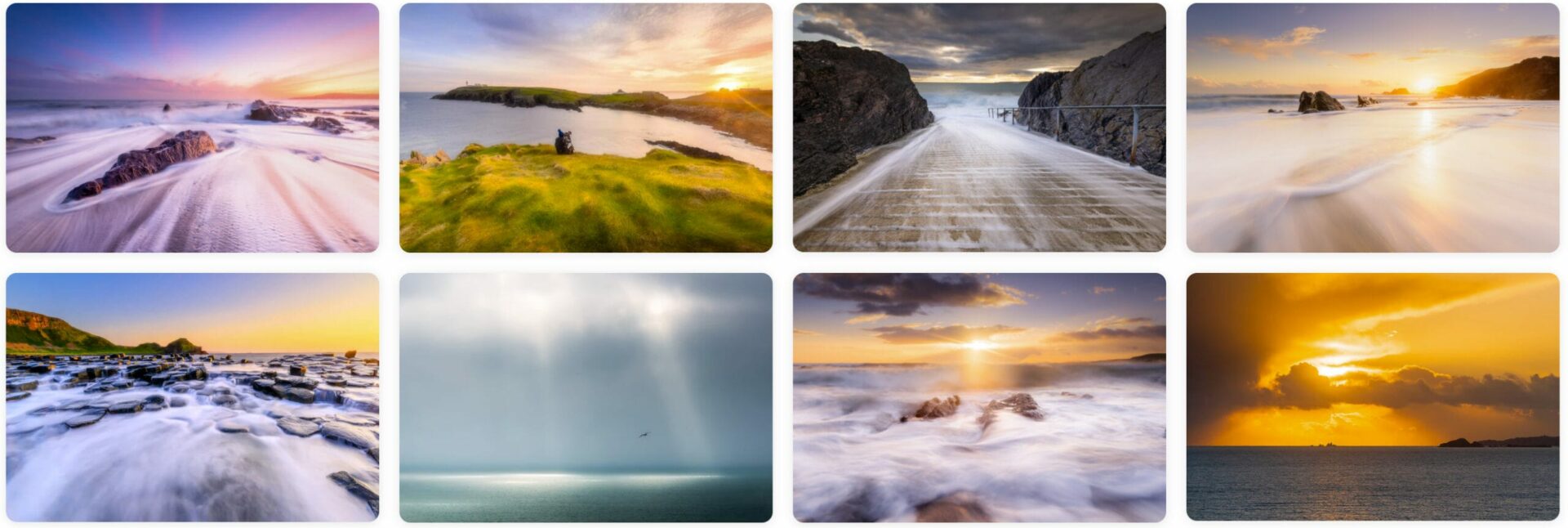
How to capture some awesome seascapes photographs.
As seascape photographers, our job is to try and capture that beautifully wild and sometimes elegant dance between the surging sea and the unyielding land. This is where not only the true art of Seascape photography comes in but also your own personal character and style show through in your results.
Seascape photography is completely different to normal photography as it’s a glimpse into now only what was happening at the very moment the shutter button was pressed but also how the artist or photographer (you) saw what was going to happen.
Yes, you have to be able to predict the future or more importantly be able to predict wave and water movement, the only way you can do this is by simply sitting down and watching the sea for a while, carefully noticing what patterns develop in the water.
Nearly all my top Seascape Photography tips are included in this article and if you can spare just five minutes I can nearly guarantee you your seascape photography will improve dramatically as a result. So, go on sit back, relax and have a read, your photography will thank you for it later.
Now, if you want to hear all my Seascape photography tips then you are going to have to attend one of my Photography workshops or one of my one to one tuition sessions in person 🙂
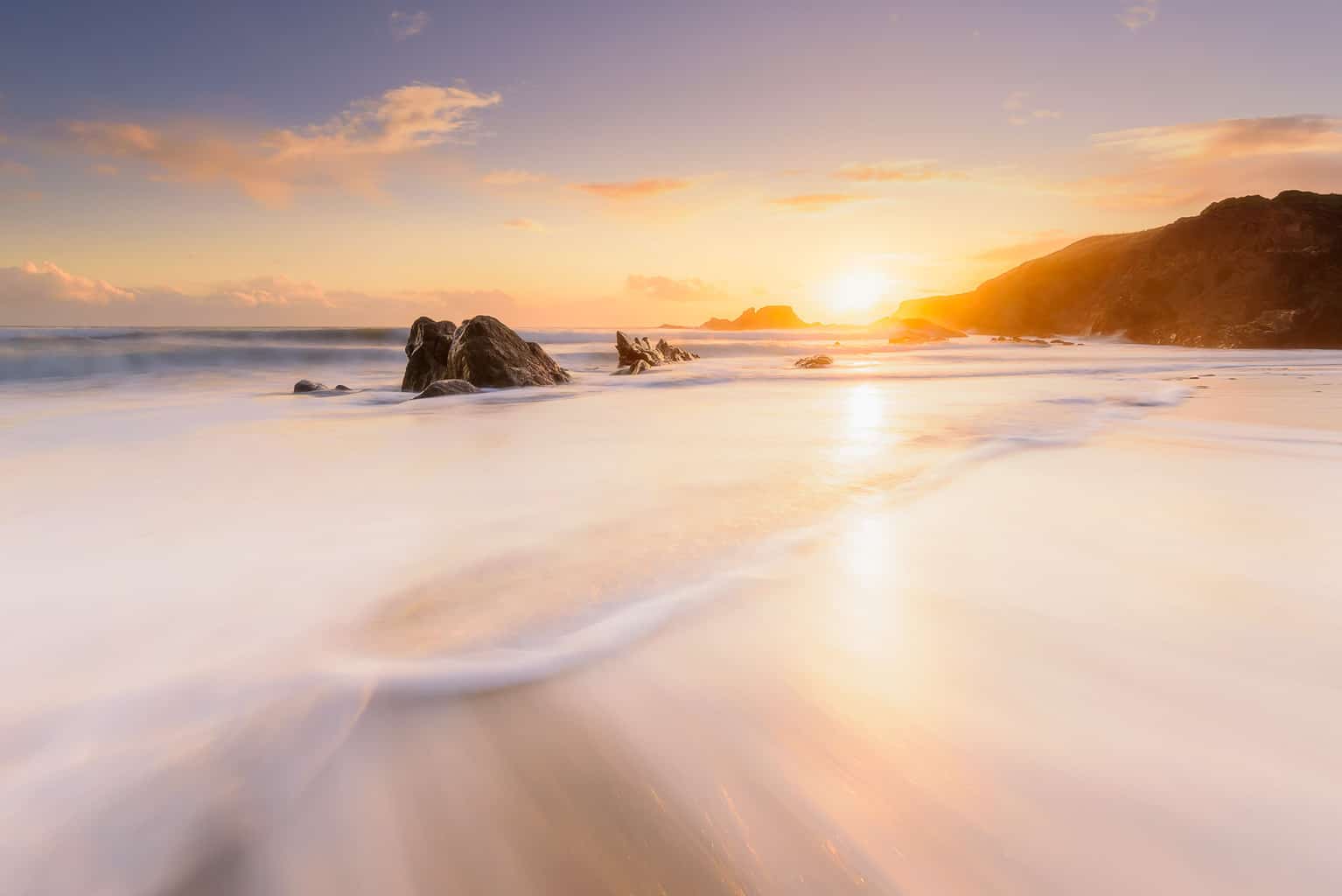
Seascape Photography generally includes a lot of long exposure photography, it can really help to capture some stunning movement in the sea and create a unique look to your photographs. In saying that high speed shutter shots also have a very stong role to play in seascape photography as they can create some dramtic and powerful photographs like when a large wave crashes against a rock, using a fast shutter speed you can freeze all those tiny droplets that have been launching into the air.
So this brings us nicely to my first seascape photography tip…
Tip 1.- Shutter speed.
Seascape photographers primarily use shutter speed to convey movement in our photography and this is huge for seascapes, we strive to capture that ever moving interaction between the land and sea. The correct choice of shutter speed here can help to highlight the difference between the water and the shoreline in an incredibly dramatic way, helping to create the exact mood or look that we want in our photography.
Always remember the principle element we want to capture here is either energy or movement. So that’s your first question, when you are standing on the beach, which one do you want in your photograph?
With the correct techniques in long exposure photography the solid foreground can act as an anchor for the photograph as it’s both sharp and in focus (as it’s not moving) where as both the water and clouds movement (in the right conditions) can create this magical type of motion blur via Long Exposure Photography (tips here).
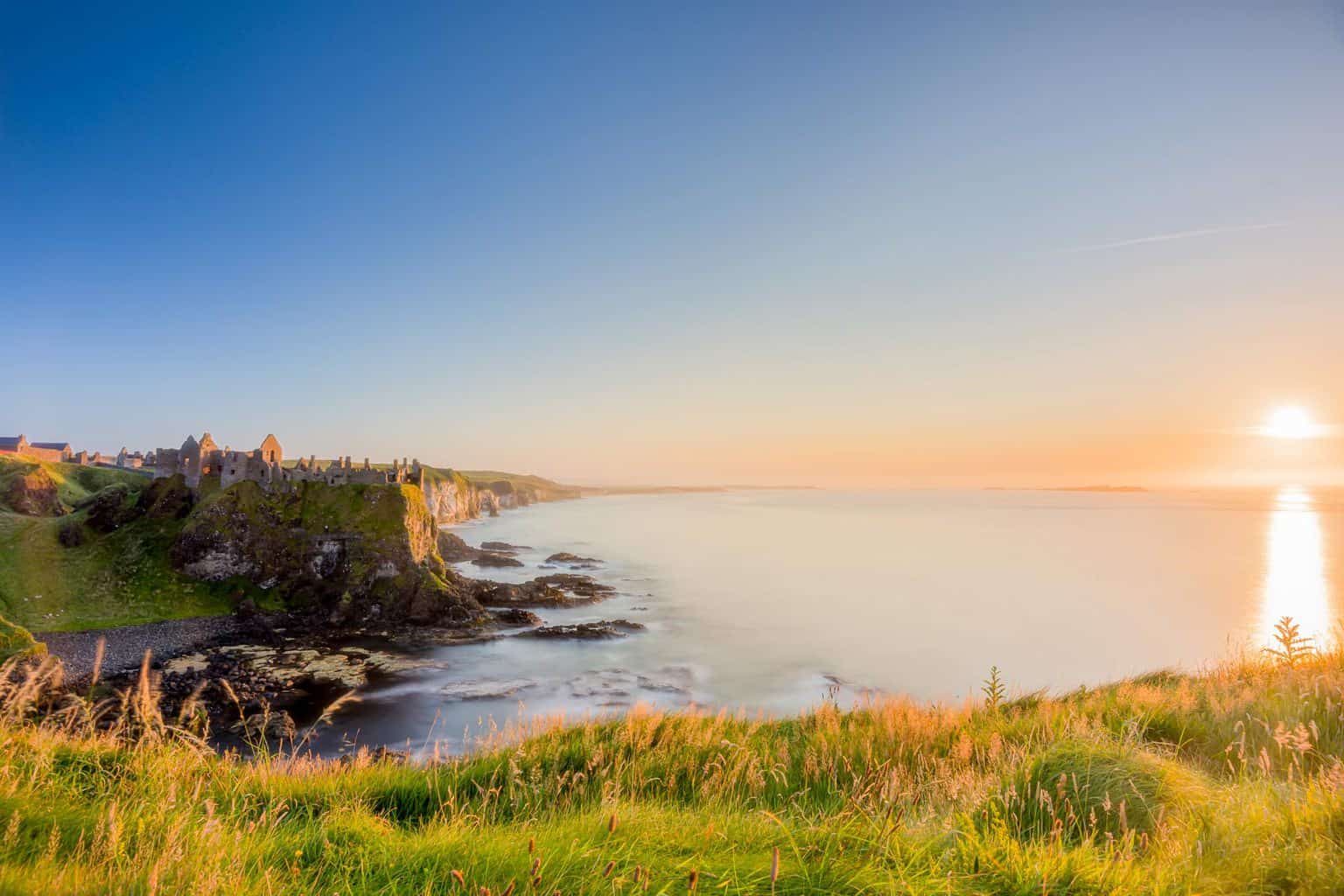
So which shutter speed is right for Seascape Photography?
Well, there is no simple straight forward answer to that but I have them all explained below and how you can find the right one for your shot also.
Which option is right all comes down to you, your vision as a photographer and the conditions at the time, so how do we figure out the right shutter speed?
High speed shutter shots.
That’s really simple you just fire off a shot at 1/1000th of a second when a wave crashes off the rocks and you have your droplets frozen in the air, in fact everything freezes in that shot. Which creates a stunning image full of detail and energy.
Slower High Speed shutter shots.
These shots are great when you want to take the same shot as above but you don’t want those droplets frozen, you want them conveying even more energy so you take a shot at 1/125th of a second, now your shutter speed could be faster or slower than that it all depends on the force of the impact and the size of the wave.
What this does is… it freezes everything in your image apart from those droplets, which are now streaking across the frame. This really helps to convey the energy of the impact and can provide a very powerful dramatic photograph. Trial and error here with your shutter speed is key.
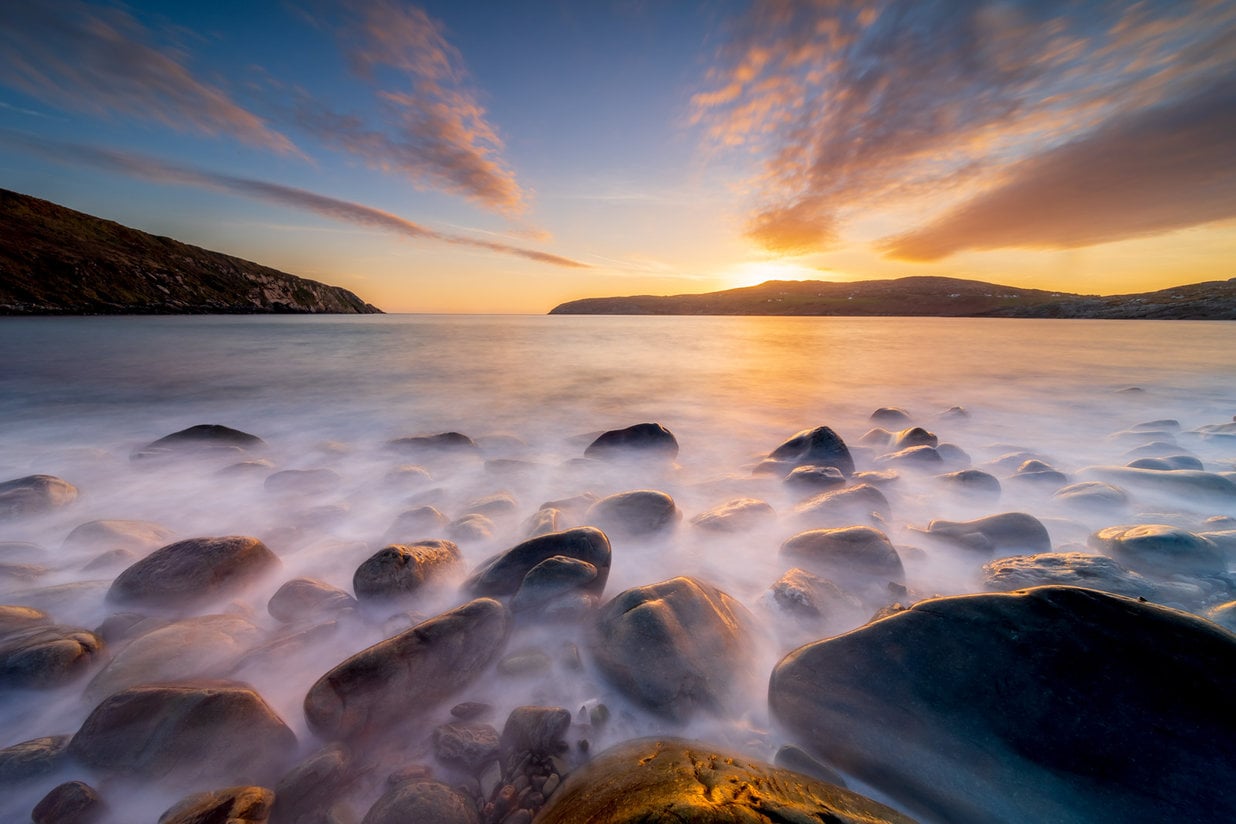
Long Exposure Photography
It’s really incredibly simple again for long exposure photography, you just set your camera up with strong neutral density filter and take a photograph for 30 seconds and bang there you have it a long exposure photograph that is going to soften out the water like it’s milk and your rocks, cliff or beach etc… will come out sharp which again creates this surreal effect in your camera.
Now I say it’s simple and yes it is once you figure out which ND filter you need BTW I have an article here showing you how to use ND filters, what they are and also one on which ND filter do you need. Those articles help to explain the the black magic that is ND filters and they are all explained simply.
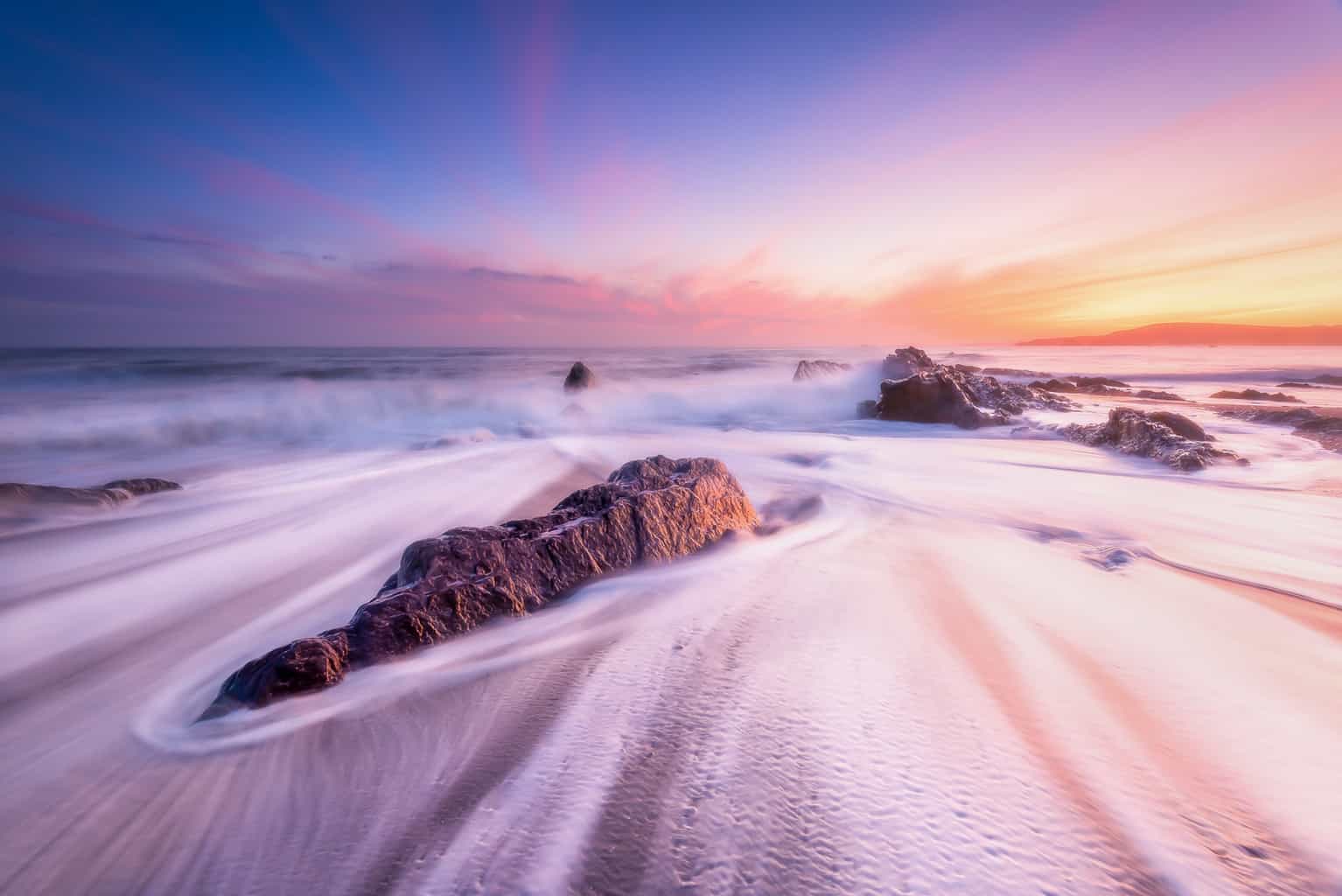
Shorter Long Exposures
Now this is the tricky part and for me this has to be the most challenging part of seascape photography, this also helps create completely unique images at the same time.
The first thing I tell people to do is to just sit there and watch the water for a while, think about the movement you want and how far you want the water to move in your shot so pick your start point point A and your end point Point B, once you have that in your head then you wait for a wave to comes in and simply count in your head “one thousand and one, one thousand and two” and see how long it takes the water to move from point a to point b, that then is your rough shutter speed.
So we will say you counted for roughly one and a half seconds, you then try a shutter speed of 1.6 seconds and see how that looks when the next wave comes in.
If you have too much movement then go to 1.3 seconds and try it again. If there is too little then go to 2 seconds. Yes, it’s really that simple.
Look at the two very fast photographs I took below, they are not beautiful but they were taken just to highlight the difference shutter speed makes.
Both Images were taken at exactly the same place within moments of each other, through the use of shutter speed we can completely change their feel and mood.
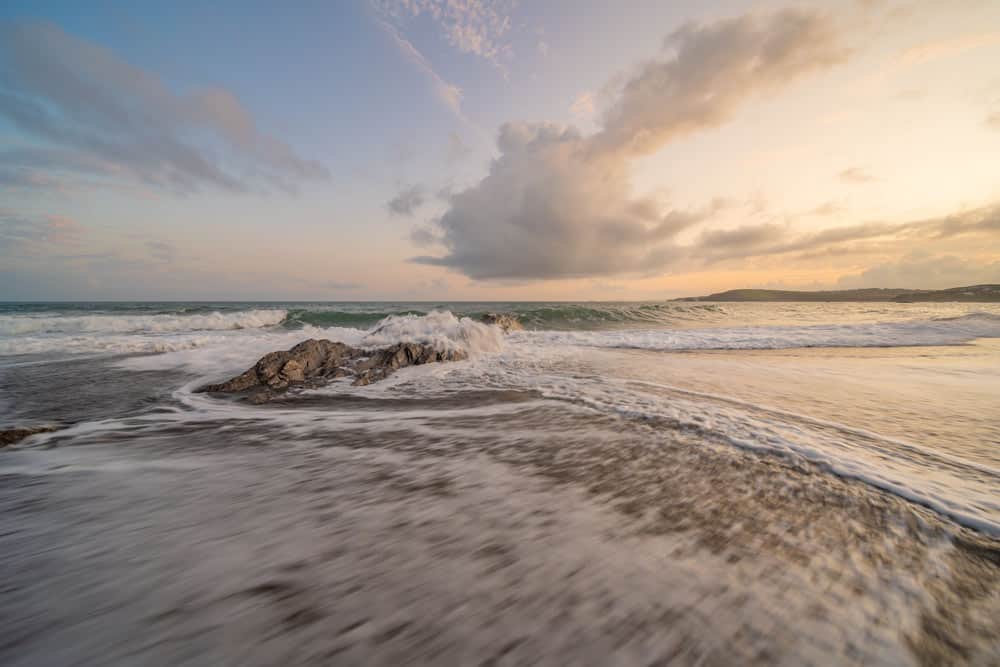
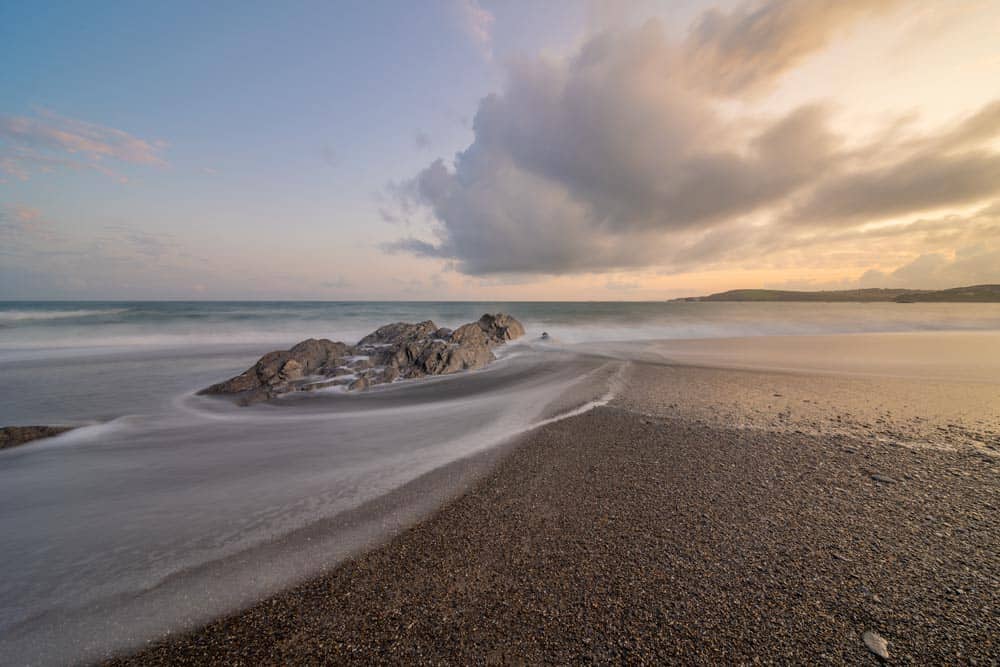
Tip 2.- Mindset
This for me has to be the most important part of seascape photography as it’s about you and your interaction with the sea, how you feel there and then about what you see before you and the mood you want to convey to the viewer. Stick with me for a minute here and please don’t skip this part, yes it may seem a bit mad at first but I honestly feel you and your photography will massively benefit from it.
If you think about it have you ever seen an artist like a painter just pick up a paint brush and start painting without think about it? A good photographer needs inspiriation, to look, listen and absorbs what’s around us and then use all that to create something special.
The first thing I do I do when I get to a location (no matter where it is or what style of image I want to take) is to just try to relax for 5 to 10 minutes and take that time to connect with the view, take some deep breaths and just watch the sea’s movement, the conditions, notice what’s going on around you and try and get your head in the right mindset for the image you are about to create. If you can’t connect with an image how can you expect the viewer too?
I know that sounds completely mad but if you sit back and watch the sea for a while you will not only see patterns emerge in the waves but also specific movement around rocks and you get a better overall picture of the shot you want to take, this for me is the key difference between a good photographer and a normal photographer.
Seascape photography is something you just cant rush and isn’t it always going to be better to take just a single photograph you are proud of and happy with then 100’s that are just snapshots. In ways to me those images are missing a soul and a purpose. A good photograph is one that you slwoly fall into, the more you look the more you see, which all goes back to the story telling aspect of photography.
Don’t get wrapped up in composition rules like the rule of thirds go with what seems right to you. Go with your gut and remember you are the best photographer in the world for your own style of photography. So if you spend the time to listen to “you” and what you see then your photography will jump forward rapidly.
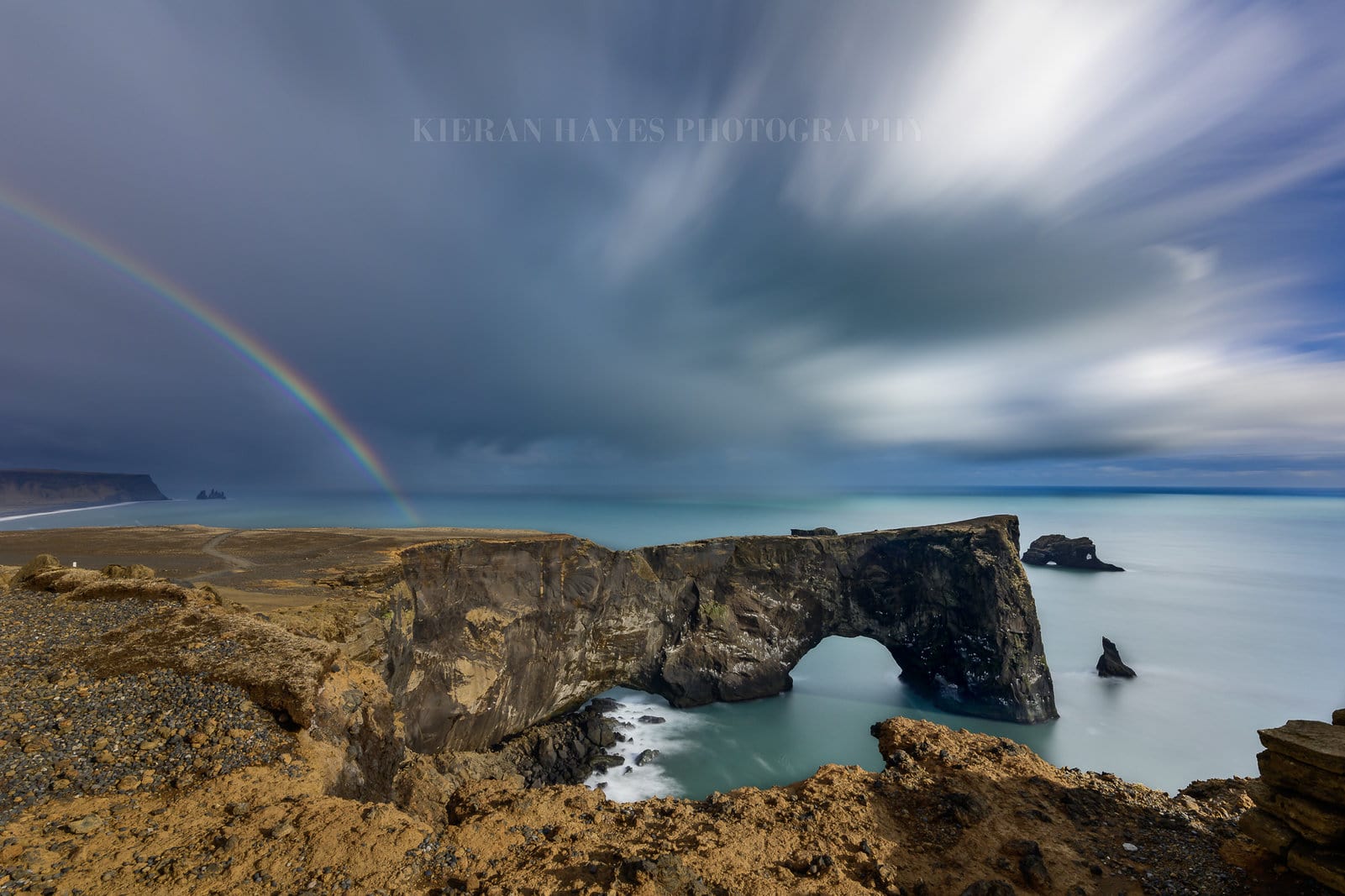
Tip: 3.- Picking the right time.
Light is king as with all other types of photography, the hours around sunset & sunrise are ideal, they are usually referred to as the golden hours.
The nice soft warm glow of the sun at these times of the day is both spectacular and magical. They can also cause a few problems for us photographers though, with the harsh contrast between direct sunlight and shadowed rocks or cliffs, using raw instead of jpeg is going to really help you here.
Trying to correctly expose for the sun is your main priority if the sun is actually in your photograph, while still keeping your shadows reasonably well exposed. A good tip here is to keep an eye on you camera’s histogram as it will always be your best friend when it comes to correctly exposing your photograph, always remember when you’re learning its better to verge on underexposing your photograph rather than overexposing it as you could burn out the sky, this simply can’t be recovered in editing afterwards.
The easiest time for photographers to practice is just after sunset as the light is a lot easier to balance out then and you can experiment at ease. The next best time is on an overcast day as you have no direct light and your images are a lot easier to expose correctly then.
Tip: 4.- Composition.
This is one of the most difficult aspects of any genre of photography as it usually requires a lot of vision or trial and error. Can you teach yourself to learn this skill? Well, the simple answer is yes but it can be a long and tedious process so I have a few little tips and tricks for you.
The rule of thirds is always your friend, it can be used to basically set up your photograph in a standard format (a quick google will teach you all you need to know about it) yes it gets boring after a while but it gives you a solid base to start from. My top tip with the rule of thirds and the most important aspect of it is learning when to break when you need to. So yes I just gave you a two tips and one was breaking the other one 🙂
Why I say it’s important is because when you feel it’s wrong then it most likely is so go give yourself that bit of support and go for it. Smash those rules and back yourself. It may not always workout at first but when it does it could be a winner.
These tips are here to teach you the basic and get you up and running fast, after a while you can make your own tips, just don’t forget them.
As with any image that you introduce motion blur into for me, it’s important to give the viewer a point to anchor the image on.
A good trick or tip is to compose an image with a solid object directly at the start of the photograph. Your eyes and mind then have a solid grounding point and from there you can be drawn into the image. There are obviously exceptions to the rule but again this is just a good starting point.
The most important aspect to remember is what you like about the scene? What do you see in your mind? After you take the photograph look away from the scene concentrate on something else and then turn around again and only look at the image on your camera. Is that what you wanted? If not then why not?
When we are so caught up trying to compose, capture and expose an image correctly I often see photographers completely forgetting what it was that they wanted to capture in the first place. When they get home and look at the photograph on their screen the “if only moment” happens.
So try to look away from the scene and look at the captured photograph with a fresh pair of eyes again. We often see what we want to see when viewing the captured image and the scene at the same time.
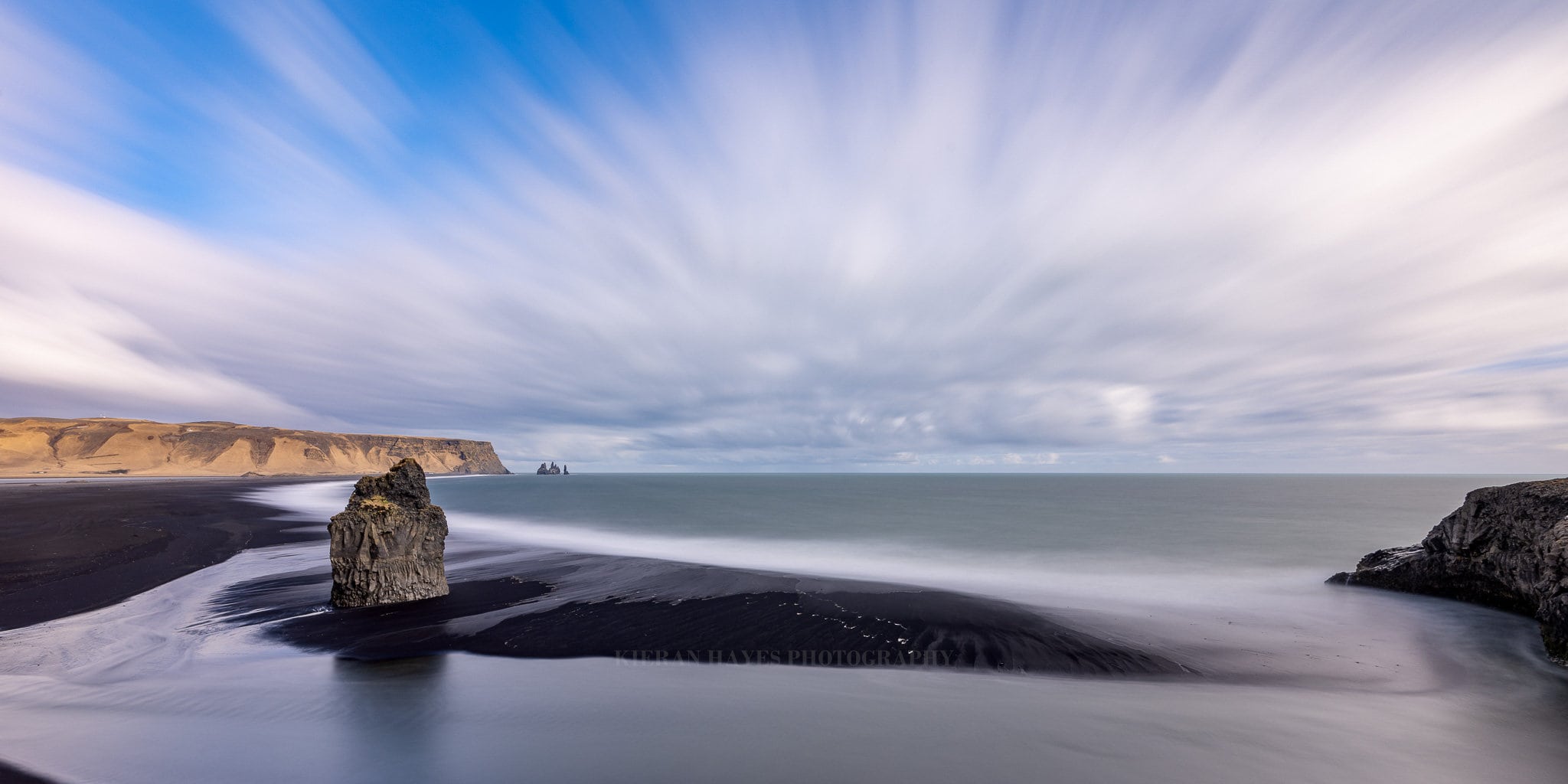
Tip: 5.- Bed in your Tripod.
Our first step is to setup our second best friend, that’s our the Tripod of course.
This might seem a simple task but think again. if we are at the waters edge with water whipping past our legs we need to bed-in the tripod.
What the hell is “bed-in the Tripod” I hear you ask?
Well it is waiting for a wave to come in and as it retreats back out to sea you then firmly press down on your tripod and it will sink well below the surface of the sand. This has two effects in that it helps to stabilize the tripod with the weight of the sand around the tips of the legs and it also prevents the retreating water from digging under the legs and undermining the stability of your tripod.
I only use solid and durable tripods as cheaper versions just don’t last and move too much also. As a little bonus tip I will also say that years of experience have thought me to extend the narrower legs on my tripod to lift the joint (twist-lock or clasp) out of the sand and water. This should help prolong the life of your tripod and make it easier to clean later.
Next, place the camera on the tripod and put your bag securely over your shoulder, never leave your bag on the sand near the tide in case of sudden swells. Get your light readings and workout what filters you need depending on the effect you want. I usually meter off the sun as this is the part of the image we need to correctly expose first and then work backwards from there. Now for my favourite part the photography filters…
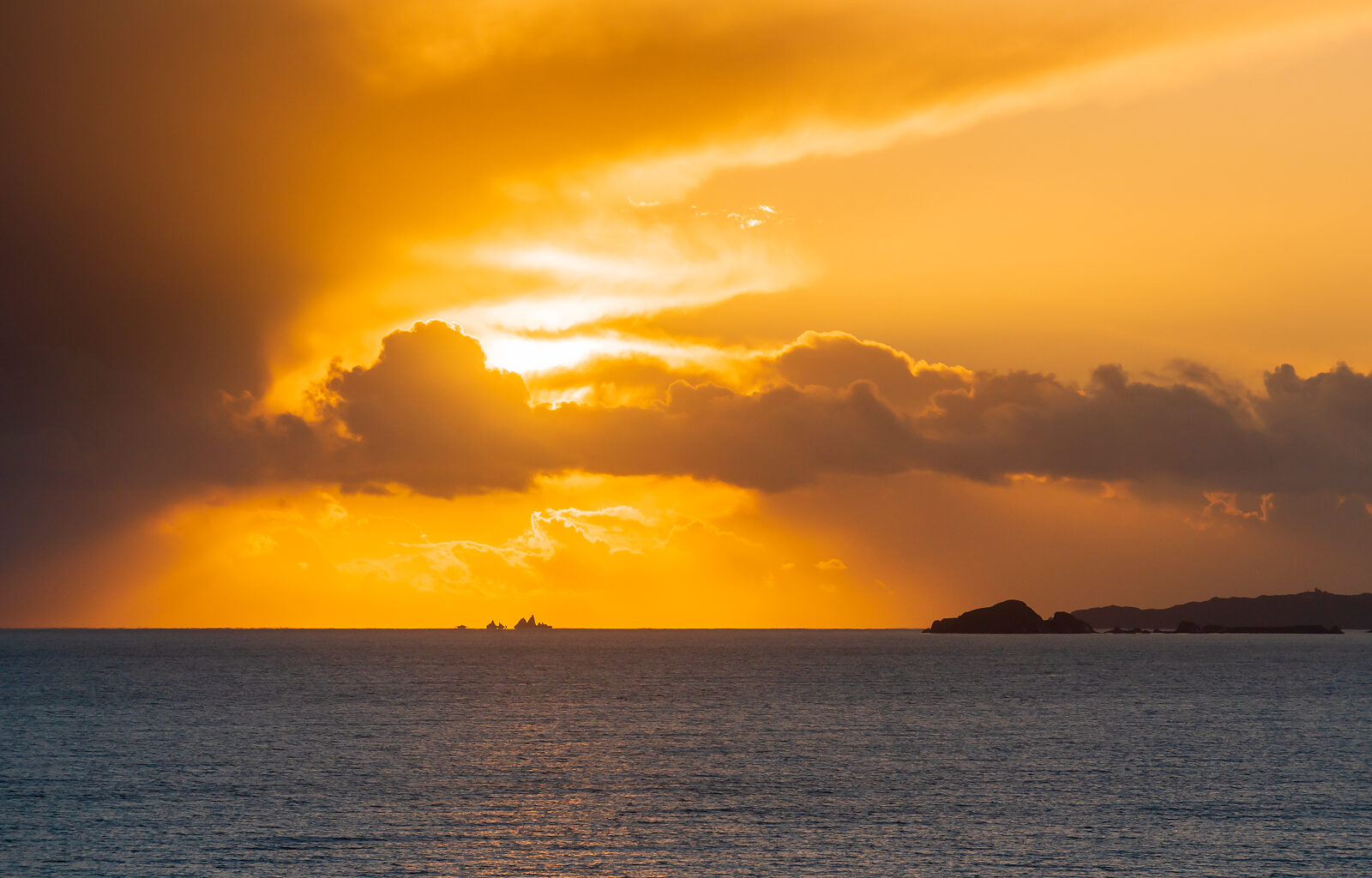
Tip : 6.- Focus.
For me, manual mode and back button focusing are second nature and vital to my work. In my Portraiture and commercial work they are vital tools, for Landscape and Seascape photography I feel as though they should nearly be mandatory for everyone to learn.
There is a lot of confusion regarding focusing and the difficulties involved. One of my landscape tips that I tell people starting out is to set your aperture to F11 to achieve a good depth of field while maintaining a good level of sharpness. Next, go into Live view and zoom in to 100% on your foreground and adjust the focus manually until it’s in focus then go to your background and check your focus there.
If you’re shooting a very close foreground you may need to change your aperture to F16 to increase your depth of field, just remember this also decreases your sharpness slightly due to diffraction. I normally shoot around F11 for seascapes. These aperture settings are for a Full Frame camera. If you are using a camera with an APS-C sensor then F8 to F11 is ideal.
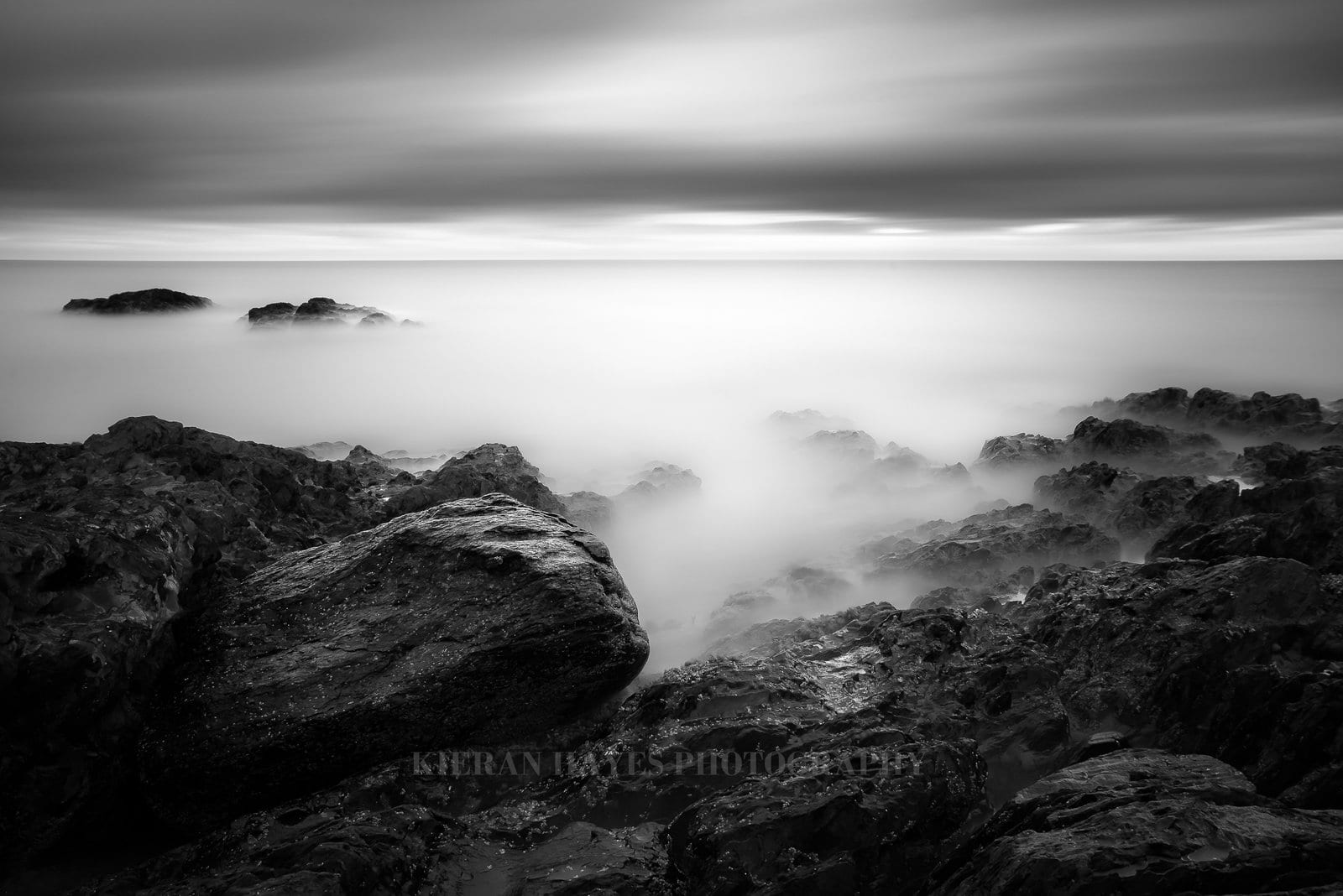
Tip : 7.- Equipment
- As Seascapes usually involves being very close to the water, proper wet weather clothing and waders or waterproof boots are your first stop. This honestly is a great investment and my top tip.
- A good quality tripod is your second best friend as most of the time it will be at or in the water. For landscape photography Tripods are normally on dry land and the only vibrations they receive are wind-based, with seascapes you have everything in extremes, while your tripod is in the water you have another variable, the water itself rushing past and around the legs of the tripod. The dragging and pushing and pulling on your tripod while at the water’s edge is difficult to control but I have a few very helpful tips further down this post for anyone new to this genre. Remember a tripod is a photographers best friend. I have a video at the end of this list on how to use a tripod and why you should be using one..
- Mind your Camera and Lens. Yes, that was to be expected I suppose and not one of those top tips you didn’t see coming 🙂 a good few lens cleaning cloths or wet wipes are vital, fighting with the mist and spray can be a constant battle. I use a Nikon Z7ii and Z8 with a variety of lenses depending on the situation, both of these cameras are weather sealed but I also use a shower cap to cover them incidentally they are one of my top 5 camera accessories that all together cost less than €30.-
- Filters are without doubt a seascape photographers best friend and absolutely vital for creating the effect you want.My go-to filters are Formatt Hitech Firecrest filters, I use the 4, 6 & 10 stop Neutral density filters and 3 & 4 stop graduated filters. They are always in my filter bag. I love their 100mm Firecrest MKii Filter holder for several reasons, I have a review of the Firecrest 100mm MKii holder here if you’re interested in learning more. I am honoured to be an official ambassador, featured artist and photography educator for their products and can offer a discount or Promo code HAYES10 via their website. Click Here for the latest Formatt Hitech discount code and up to date special offers.
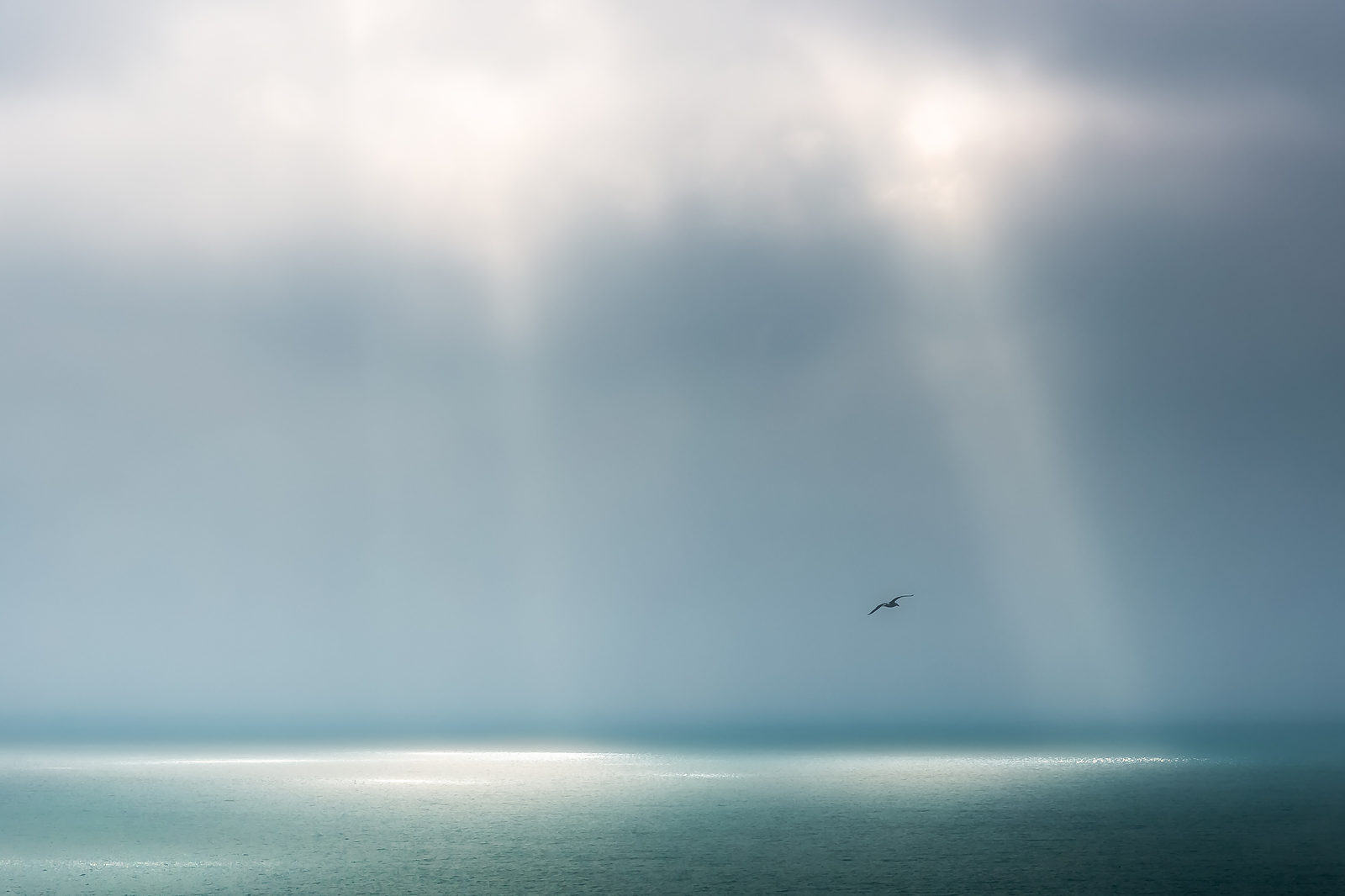
Before I start to explain how to capture these effects I would like to pass on a few photography tips I share with seascape photographers on my Photography Workshops.
My Seascape photography tips for you and your gear.
- My first tip is your feet are going to get wet so buy a good pair of wellies. Every seascape photographer needs good wellies so don’t skimp on this step as cheap wellies have poor grips. They can be anything from waders to wellingtons or even waterproof boots. Once your dry and safe that is the most important thing. I have seen first hand and also heard of numerous seascape photographers slipping and falling on rocks due to poor grips. All it takes is one slip and it could be fatal, a nasty accident for you or your equipment. So this is one of my top tips and for good reason it’s to keep you safe and warm.
- My second tip is NEVER turn your back on the sea. I am going to say that again, please never ever turn your back on the sea, she is a beautiful beast but she can also throw up the odd surprise. Waves can be consistent but rogue waves are very real, they have surprised me numerous times over the years. Also remeber different areas and countries have very different coastal conditions and countries like Ireland get some very large rogue waves. So out of all my photography tips please don’t ignore this one.
- Tip number three is buy some good waterproof clothing as yes, you guessed it, you are going to get wet. I regularly return home soaked from a shoot at the beach and Nadja always says something along the lines of “oh can’t wait to see the photo’s”. That may seem like an inside joke but I always find the times I get destroyed are the times I see something and just go for it. When I put myself where the action is and try to capture an image I can see in my mind’s eye. Standing back and watching from dry land can often be an option but you’re missing the closeup impact and action then, especially when shooting with an Ultra wide-angle lens.
- The final one of my simple tips for this section is to take the photographs in Raw not jpeg and use manual mode or Aperture priority. Using auto mode on your camera is like painting with a broom whereas manual mode is like painting with a delicate paintbrush, giving us photographers greater control over every single part of the image.
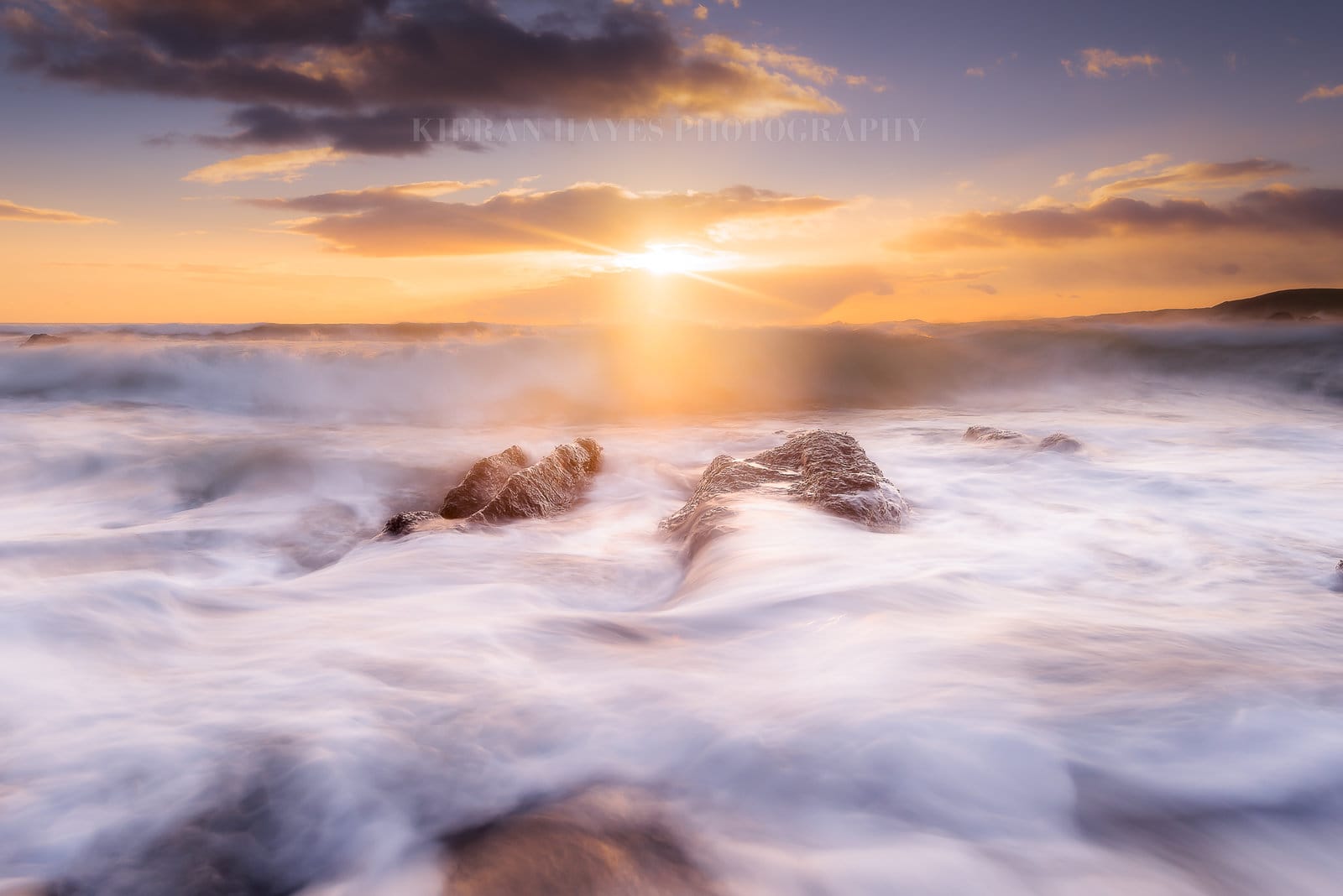
Which filters do we use and when?
Photography filters are the body and soul of my work and are a seascape photographers best friend, for the last four years I have only used Formatt Hitech Filters. I have been using their filters now for nearly 5 years and honestly can’t fault them in any way.
As an ambassador I can offer a 10% discount on all their wonderful products via their website with the Discount code or Promo code HAYES10. I should add that I get a slight commission for any filters purchased with the discount code but you also get 10% off so it’s a win-win situation for everyone.
The filters I normally use are a combination of a 3 or 4 stop graduated neutral density (nd) filters and a 10 stop nd filter for exposures between 15 seconds to minute-long exposures depending on the light at the time. This creates a beautiful motion blur in the water and can help to seemingly pull the clouds across the sky if the conditions are right.
I use the Firecrest 3 or 4 stop graduated nd filter and either a 4 stop or a 6 stop nd filter for exposures around half a second long to 2 seconds long. This effect is ideal when you want the wave to just have motion blur while keeping the sea and sky all in focus and sharp. The correct shutter speed varies depending on the waves speed and the incline of the beach.
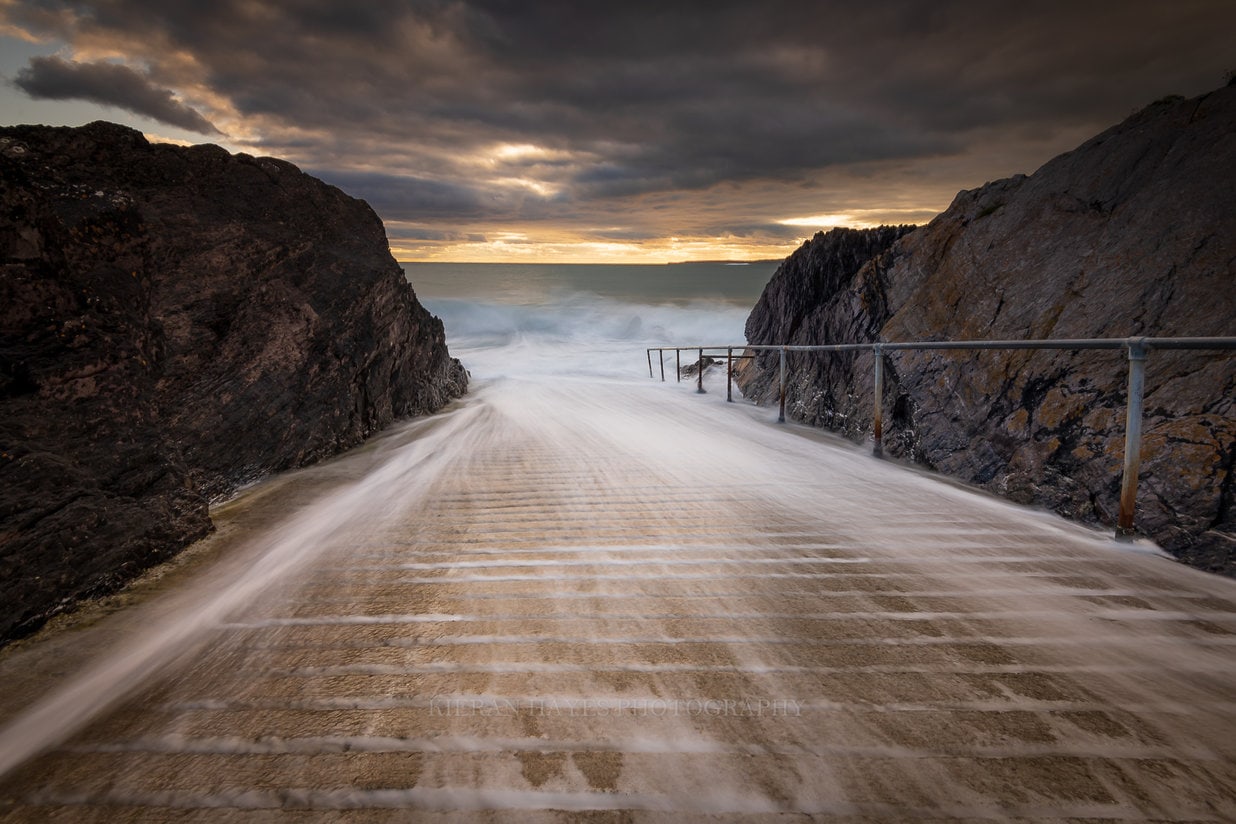
These are all just very basic tips which can lead you to the more advanced aspects of photography like lens compression and the correct use of focal length, being more artistic with depth of field and even blending several images together to create a more balanced exposure.
Always remember photography is an art form and we can use our cameras to compose each image like a painting adding our own personal touch with our camera settings. The ultimate aim for me is to try and capture a photograph correctly, leaving me with as little editing as possible (max 10mins per pic) so I can spend more time taking photographs than sitting at a desktop.
Also don’t get into a routine with your photography, sitting on a beach and putting on a ten stop filter and just pointing it at something, anyone can do that in fact I can teach someone that in 5 mins on a workshop.
Go develop your skill and seek out something new.
The ten stop trick is an easy one and great to start with as a beginner to photography but go get some more filters and try to actually capture something that involves timing. After all Photography has always been about timing.
These are just my own personal ideas, tips and suggestions for budding seascape photographers. I am sure I missed a few tips along the way and possibly posted a few some may not agree with but that’s the beauty of photography. Remember we always learn something new and we all have our own techniques.
So go explore, go get wet and immerse yourself in that beautiful ocean. Go fill your lungs with fresh air until you can feel the salt crystals forming on your skin because there is nothing more beautiful than standing in nature and trying your best to capture her beauty in a single image. Something I can only personally hope to achieve one day.
My Photography Tips And Tricks In The Menu above Where I Cover Everything From…
Photography editing Software tips,
ND Filters explained and how to choose the right ones,
Photography tips everything from filters to tripods,
How to backup your photographs,
My secret tips to photography,
See you out there,
Kieran Hayes.
This blog post was partially written for the blog of Capture Landscapes which is a fantastic website for tips and tricks so go check it out 🙂
